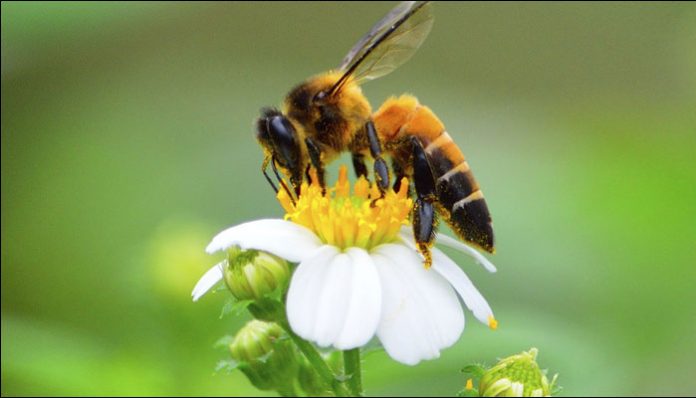Scientists have blamed the widespread use of neonicotinoids – a common insecticide – for the global decline in population of wild bees.
Neonicotinoids are one of the most often used insecticides and scientists have found evidence that their widespread use has led to the decline of pollinators such as honey bees which are needed for increase in yields and quality of the crops grown for human consumption.
Scientists say their findings help set to rest some of the controversy surrounding the use of the chemicals in agriculture. As part of the study, researchers grew rapeseed in 33 sites across Germany, the United Kingdom, and Hungary. They coated the crop with neonicotinoids, introduced various bee species to the area, and monitored the health of the colonies compared to control groups.
The study found that the bees who lived near the plants treated with neonicotinoids had more trouble surviving the winter.
Bees play vital role in maintaining both biodiversity and food production and are threatened by habitat loss, pesticides/insecticides, climate change and disease.
The knowledge about the magnitude of harm that the bees were being subjected to due to these particular insecticides was still vague.
In 2013, the European Union banned the chemicals due to concerns that they were killing bees, which are crucial for agriculture.
At present, unfortunately, things haven’t been looking up for global bee population. The ban has been surrounded with controversy, with critics slamming earlier studies, saying that the simulations in them were unrealistic.
Since the study, published in the journal Science, was conducted on a large-scale level, it found that oneybees in the United Kingdom had difficulty surviving to begin with, but survival was lowest near crops treated with neonicotinoids the year before. Similarly, in Hungary, colony numbers fell by 24 percent by following spring. However, there was no effect in Germany, as per a report in The Verge.
Furthermore, the authors suggest that the different results may be because of the different climates naturally found in the three countries. Hives in Germany are usually larger to begin with and closer to a wider range of flowers than those in the UK and Hungary.
Overall, though, because this was a field study that mimics real-world conditions, the study goes a long way toward settling the debate on these chemicals, even if the news isn’t good, the report concluded.






